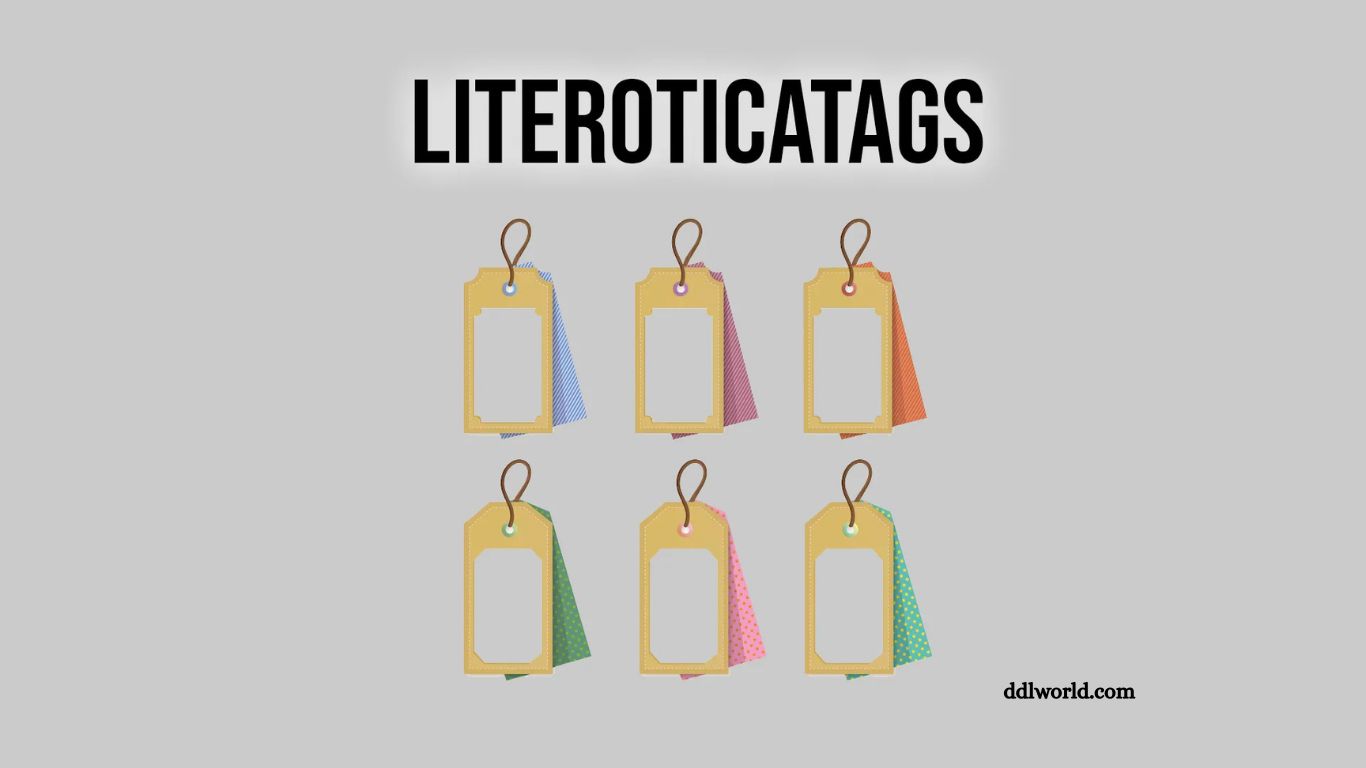Literotica Tags Explained: What You Need to Know

In the expansive world of online erotic fiction, Literotica has emerged as a leading platform for both writers and readers to express and explore adult-themed narratives. Central to the site’s functionality—and to enhancing the overall experience—is its tagging system. These tags serve as vital navigational tools, helping categorize stories by genre, theme, kink, and character dynamics.
For writers, effective tagging ensures their work reaches the right audience; for readers, it allows for precise discovery of content aligned with personal interests. Understanding how these tags work is key to making the most of what Literotica offers. In this article, we’ll explore the purpose of Literotica tags, how to use them strategically, and what readers should know to navigate them confidently and responsibly.
Read More: MyFastBroker.com: In-Depth Review and Expert Analysis
Understanding Literotica Tags
At its core, a tag on Literotica functions as a keyword or phrase that identifies specific themes, genres, or narrative elements within a story. These tags play a crucial role in both organizing content and enhancing the discoverability of stories for readers. For users browsing the platform, tags act as filters—guiding them to stories that align with their personal tastes and boundaries.
Writers, in turn, use tags to accurately represent the content of their work, ensuring it reaches the right audience. Tags can range from broad categories like Romance or BDSM to highly specific descriptors such as First Time, Public Sex, or Sexual Awakening, offering a nuanced glimpse into the story’s tone, structure, and subject matter.
The Importance of Literotica Tags
Enhancing Discoverability
One of the most significant advantages of Literotica’s tagging system is its ability to enhance the discoverability of stories. With thousands of new submissions appearing regularly, readers rely on tags as navigational tools to locate content that aligns with their specific interests.
For authors, the thoughtful use of relevant tags can be the deciding factor in whether their work gains visibility or gets buried in the crowd. A well-tagged story stands a far greater chance of reaching its intended audience.
Tailoring the Reader Experience
Tags also play a vital role in shaping and personalizing the reader experience. By clearly indicating a story’s themes, kinks, or narrative elements, tags help set expectations upfront. This allows readers to make informed choices, avoid content that doesn’t appeal to them, and focus on stories that match their preferences—resulting in a more satisfying and engaging experience overall.
How to Use Literotica Tags Effectively
For Writers
If you’re an aspiring author looking to share your erotic fiction on Literotica, mastering the use of tags is essential for attracting the right audience and maximizing your story’s visibility. Here are a few key strategies:
- Be Specific: Generic tags like erotic or romance are too broad to stand out. Instead, use descriptive combinations like college erotic romance or BDSM fantasy to give readers a clearer idea of your story’s unique elements.
- Limit the Number of Tags: While Literotica allows multiple tags, restraint is crucial. Over-tagging can confuse readers or appear disingenuous. Stick to a focused set of relevant, meaningful tags that accurately reflect the core themes of your story.
- Update Tags When Needed: Your story may evolve based on feedback or new chapters. Revisit and refine your tags as necessary to ensure they reflect the most prominent elements of your narrative. This keeps your work aligned with reader expectations.
For Readers
With thousands of stories to choose from, finding exactly what you’re looking for on Literotica can be overwhelming. Using tags wisely can help you navigate the platform more efficiently:
- Check Ratings and Reviews: Before committing to a story, glance at the user ratings and comments. They can provide valuable context on whether the content lives up to the promise of its tags, helping you avoid mismatches in tone or subject matter.
- Utilize the Search Function: Use specific tags in your searches to quickly locate stories that match your interests. Whether it’s age gap romance, public sex, or taboo fantasies, precise tags streamline your discovery process.
- Explore New Genres: Don’t hesitate to browse unfamiliar tags. Literotica offers a wide array of genres and themes, and stepping outside your usual preferences may lead to surprising and enjoyable finds.
Popular Literotica Tags to Consider
To help guide your reading or inspire your writing on Literotica, it’s useful to become familiar with some of the platform’s most popular and frequently searched tags. These tags not only reflect trending themes but also offer insight into the diverse interests of the Literotica community:
- BDSM: This tag explores themes of bondage, discipline, dominance, submission, sadism, and masochism. Stories range from light roleplay to intense psychological dynamics, often focusing on trust, power exchange, and boundary exploration.
- Interracial: Centering on relationships between characters of different racial or ethnic backgrounds, this tag often includes cultural nuance, identity exploration, and contrasts in personal or societal expectations.
- Incest: One of the platform’s most controversial yet widely used tags, this category involves forbidden familial relationships. While fictional in nature, it appeals to readers interested in taboo dynamics and power-laden intimacy. Due to its sensitive content, it comes with strong reader discretion.
- Fetish: A broad tag encompassing a wide range of niche interests, from foot worship and pantyhose to latex and medical play. These stories offer a deep dive into specific kinks and are often highly personalized and imaginative.
- Vampire/Fantasy: Blending eroticism with the supernatural, this tag includes vampires, werewolves, demons, and other fantasy elements. These stories often weave together passion, danger, and mythology, appealing to readers who enjoy dark romance and otherworldly seduction.
Exploring these tags can help readers discover new preferences and give writers ideas for structuring compelling, genre-specific narratives.
Navigating the Ethical Considerations of Literotica Tags
While Literotica tags are powerful tools for enhancing storytelling and discovery, they also carry ethical responsibilities. Both writers and readers must approach adult content with a heightened sense of awareness, particularly when dealing with sensitive or potentially triggering material. Here are key considerations to keep in mind:
- Consent and Representation: Writers should prioritize clear, respectful depictions of consent, especially in categories such as BDSM, non-consensual, or incest. Even within fictional settings, the portrayal of sexual dynamics must acknowledge boundaries, agency, and mutual agreement. Readers, too, should interpret stories with an understanding of the context and intent behind the content.
- Trigger Warnings Through Tags: Although Literotica does not employ a formal trigger warning system, responsible tagging functions as an informal safeguard. Authors should use tags like non-consensual, dubcon, or abuse with precision and transparency, allowing readers to make informed choices about what they engage with. Avoiding misleading or overly vague tags is crucial in maintaining reader trust.
- Sensitivity to Diverse Audiences: Literotica’s global and varied user base includes people of all backgrounds, identities, and experiences. Writers should be mindful of cultural, gender, and sexual diversity, avoiding harmful stereotypes or exploitative tropes. Similarly, readers should recognize that content is subjective and engage with stories respectfully—even those that explore unfamiliar or uncomfortable themes.
Ethical tagging isn’t just about compliance—it’s about fostering a creative space that values safety, respect, and honest representation within erotic storytelling.
Frequently Asked Questions
What are Literotica tags?
Literotica tags are descriptive keywords or phrases used to categorize stories by theme, genre, kink, or character dynamics. They help readers find stories that match their interests and assist writers in reaching the right audience.
Why are tags important on Literotica?
Tags enhance discoverability, improve the reading experience, and ensure that users can filter content according to their preferences. For writers, they are essential for visibility; for readers, they’re tools for content curation.
How should writers choose tags for their stories?
Writers should use clear, specific, and relevant tags that accurately reflect the story’s content. Avoid over-tagging, and update tags as needed if the story evolves or feedback highlights new elements.
Are there guidelines for using sensitive tags like “non-consensual” or “incest”?
Yes. These tags should be used responsibly and transparently. Writers should ensure content is clearly marked so readers can make informed decisions, especially regarding potentially triggering themes.
Can readers search for stories using tags?
Absolutely. Literotica’s search and filtering tools allow readers to input specific tags to discover content that aligns with their interests.
What should I do if a story seems mis-tagged or misleading?
Readers can leave respectful feedback in the comments or flag content if it violates site guidelines. Writers are encouraged to adjust tags if they receive consistent feedback about misrepresentation.
Conclusion
Literotica tags are more than just labels—they are essential tools that shape the reading and writing experience on the platform. For writers, thoughtful tagging increases visibility and ensures their stories reach the right audience. For readers, tags offer a streamlined way to discover content that aligns with their tastes while avoiding themes that may not appeal to them.
Whether you’re exploring new fantasies or crafting compelling narratives, understanding how to use tags effectively—and ethically—is key to navigating Literotica with confidence and respect. By embracing both the creative and responsible use of tags, users can contribute to a more inclusive, engaging, and enjoyable community for all.





